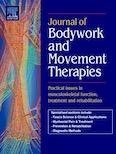![]() Minnesota Center for the
Minnesota Center for the
Alexander Technique (MinnCAT)
The Alexander Technique
The Alexander Technique is well-known to help with various kinds of discomforts AND helps people achieve optimal skill at any activity. Here are a few studies and articles.
British Medical Journal
Randomized Controlled Trial of Alexander Technique Lessons, Exercise, and Massage (ATEAM) for Chronic and Recurrent Back Pain (2008) click to view article In this study published in the British Medial Journal, 579 subjects with chronic and recurrent back pain were randomized to receive massage, six Alexander Technique lessons, 24 Alexander Technique lessons, or no intervention. In addition, half of the subjects were encouraged to walk regularly. A year later, the group with no intervention had 21 days of pain per month. The group with massage had 14 days of pain per month. The group with six Alexander Technique lessons reported 11 days of pain per month, and the group with 24 Alexander Technique lessons reported three days of pain per month. There were no adverse effects. Here is a BMJ produced video:
In this study published in the British Medial Journal, 579 subjects with chronic and recurrent back pain were randomized to receive massage, six Alexander Technique lessons, 24 Alexander Technique lessons, or no intervention. In addition, half of the subjects were encouraged to walk regularly. A year later, the group with no intervention had 21 days of pain per month. The group with massage had 14 days of pain per month. The group with six Alexander Technique lessons reported 11 days of pain per month, and the group with 24 Alexander Technique lessons reported three days of pain per month. There were no adverse effects. Here is a BMJ produced video:
Journal of Bodywork and Movement Therapies
Alexander  Technique classes improve pain and performance factors in tertiary music students (2019)
Technique classes improve pain and performance factors in tertiary music students (2019)
To examine the effects of AT classes for tertiary music students on PR pain...and factors associated with improvements in music performance quality. click to view
________________________

Minnesota Healthcare News
A Matter of Technique: Addressing Musculoskeletal Pain at its Source (2010)
Brian McCullough wrote this article for Minnesota Healthcare News. click to view
________________________

Minnesota Monthly
The Great Alexander
An M.D. / Journalist had a lesson with Brian and wrote this article for Minnesota Monthly click to view
________________________

Jane Brody / New York Times
Jane Brody's Personal Health Column
This article generated thousands of inquires nationwide. click to view
________________________

Uro Today
The Impact of the AT in Improving Posture During Minimally Invasive Surgery (2011)
Summary of research demonstrating the effectiveness of the AT on reducing surgical fatigue and improving endurance, posture, ergonomics and ability to complete laparoscopic skills set in a shorter time with measurably improved skill. click to view

Journal of the American Physical Therapy Association
Improvement in Automatic Postural Coordination Following Alexander Technique Lessons in a Person With Low Back Pain (2005)
Case report describing use of the AT with a client with low back pain and the observed changes in automatic postural responses and back pain. click to view
________________________

Chest Journal
Cardiopulmonary and Critical Care Journal — Enhanced Respiratory Muscular Function in Normal Adults after Lessons in Proprioceptive Musculoskeletal Education Without Exercises (1992)
(published by the American College of Chest Physicians) Summary of research on the effects of lessons in the AT on respiratory functioning. Subjects with instruction in the AT experienced enhanced ease of breathing compared to control group. click to view

Promotion of the National Labour (Barcelona, Spain)
Alexander Technique: Training for worker self-management in the prevention of musculoskeletal disorders (2011)
A descriptive and comparative study of precedents where the Alexander Technique has been applied as a tool to prevent occupational risks in different organizational settings throughout the world. click to view
________________________

International Journal of Clinical Practice
Evidence for the effectiveness of Alexander Technique lessons in medical and health-related conditions: a systematic review (2012)
The aim of this review was to systematically evaluate available evidence for the effectiveness and safety of instruction in the Alexander Technique in health-related conditions. Conclusions: Strong evidence exists for the effectiveness of Alexander Technique lessons for chronic back pain and moderate evidence in Parkinson’s-associated disability. click to view / and video:
________________________
Behavioral Medicine (Practical Psychology for Physicians)
The Alexander Technique: An innovative approach to reducing physical tension and stress (1981)
Summary of principles of the AT, etiology of misuse and how the AT helps patients identify neuromuscular tension and restore physical homeostasis. Quotes from physical therapist, orthopedic surgeon and radiologist who recommend use of the AT for patients with musculoskeletal problems, lung diseases, joint diseases and scoliosis.
________________________

Nobel Prize Lecture
Ethology and Stress Diseases by Nikolaas Tinbergen, Nobel Laureate in Physiology/Medicine (1973) click to view
A video of Nicholas Tinbergen devoting part of his Nobel Prize Lecture to the work of F.M. Alexander:
________________________

University of the West of England
Taking Charge, Choosing a New Direction: A Service Evaluation of Alexander Technique Lessons for Pain Clinic Patients (SEAT): an Approach to Pain Management McClean, S. and Wye, L. (June 2012)
A high quality clinical trial carried out in an experimental setting has demonstrated the therapeutic value and effectiveness of Alexander Technique (AT) lessons for chronic back pain. The findings suggest that lessons in the AT are feasible, acceptable and beneficial in terms of improving quality of life and patients' management of pain. Greatest changes were found in how the patients/students managed their pain (more than half stopped or reduced their medication) and the impact that the pain had on their daily lives. This also led to some behavioral changes and changes in awareness and self-knowledge on the part of the patients/students. These attitudinal and behavioral changes may explain the finding that students of the AT appeared to reduce their pain related NHS costs by half. click to view

